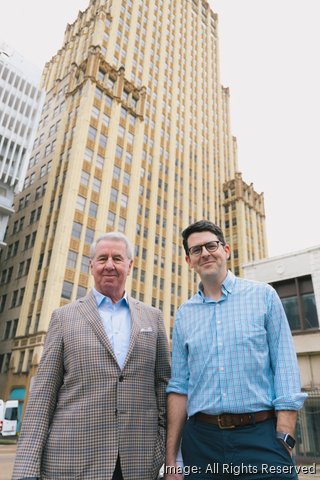Listen to this article 4 min
In November 2021, Downtown Memphis was at a standstill while people hunkered down at the height of the Omicron variant wave of COVID. Everywhere in the city core was quiet — except for the corner of Madison Avenue and North B.B. King Boulevard, in the vicinity of the Sterick, the building that had notoriously been silent for decades.
Suddenly, people in suits, trucks hauling loads of equipment, and surveyors started scuttling all around the intersection, day in and day out.
The activity became constant. And many in the neighborhood — from the property manager across the street and the brokers handling spaces around the way to the owner of the nearby pub — knew something was afoot at the Sterick Building.
Paradoxically, it became one of the worst-kept yet most closely guarded secrets in all of Memphis real estate.
Word spread beyond the surrounding neighborhood to contractors, developers, and the wider Memphis real estate community: A deal was in the works for the Sterick Building, with a local buyer and a high-powered team, after years of frustrated dreams.
The notion of a Sterick deal provided prime grist for the rumor mill for decades. But this time it seemed that, however impossible, the building that long wore the crown of blight in an abandoned Downtown might really be sold.
Yet even as workers and businessmen scurried around the building, even as trucks and machinery desperately tried to hide in a small lot between the Sterick and Visible Music College, even as workers contained their excitement and directed questions from the curious toward their bosses — not a soul would dare say the name of the buyer.
There was too much at stake to blab. It had taken too long to get even this far, and negotiations could fall apart any second.
So, rumors abounded about who was behind the deal. They whispered it was a madman, a visionary, a fool, a genius.
Whomever it was, they were going for it. The impossible was becoming true: a plan was in place to purchase and restore the Sterick Building to its former glory.
That impossible plan is now a done deal, signed just prior to MBJ publishing this story.
Click here to read MBJ's exclusive breaking news about the purchase of the Sterick Building.
The developer
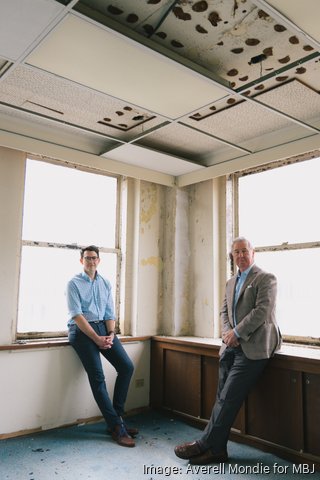
Like the best impossible deals in Memphis, the Sterick finally happened when a force of will for progress snapped into place with a passion for history.
Stuart Harris stared at the Sterick Building every day as he came to work at The Commonwealth. He served as co-developer on that historic building when Walk-Off Properties LLC renovated it in 2017 for SouthernSun Asset Management's headquarters. And he’s maintained his office there since he founded the real estate development firm Constellation Properties.
The Sterick has been a longtime obsession for Harris, with "can't make it up" details such as: When he was married in 2006, his groom’s cake was in the shape of the Sterick.
And on March 31, 2023, everyone finished signing the papers, and Harris and his partners became the building’s new owners. With the deal, Harris acquired the Sterick and the Avis car lot a block away.
In one deft move, the deal sees Harris' Sterling Hedrick LLC purchase the land from the members of the family trust who have inherited it and terminate the 99-year lease that has been slung around the Sterick, impeding its revival.
There is a tremendous amount of work to be done, but the time has finally come for the Queen of Memphis to reign again.
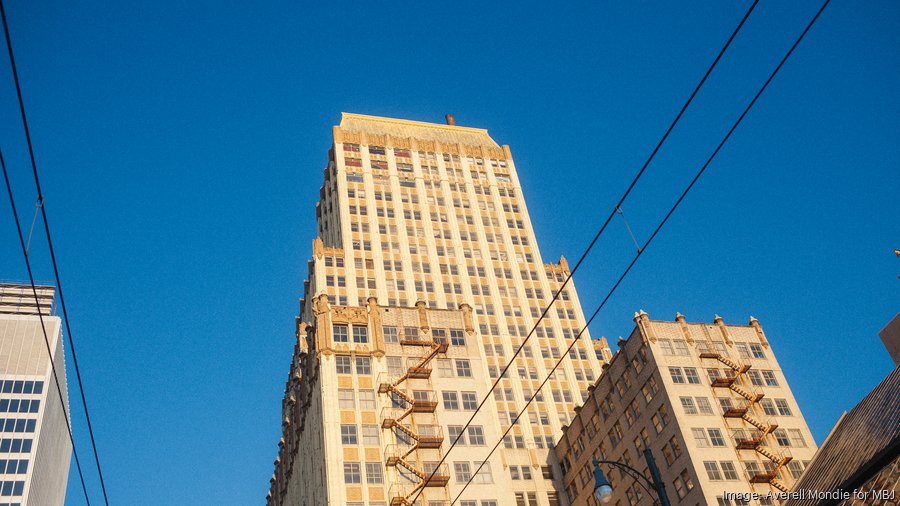






The Sterick has stood dark and empty for decades. A new owner hopes to change that.
A vision, a plan, and a closing
Intrinsic to the Sterick’s complicated history is a 99-year lease that went into effect May 1, 1926. Olivia and Charles Grosvenor owned the land at the corner of Madison and what was then called Third Street — B.B. King wasn’t even eight months old at the time.
The lease was granted by the Grosvenors to a couple Texans who wanted to construct on that spot one of the tallest buildings in the South. Ross Sterling and Wyatt Hedrick (whose surnames combined for "Sterick") opened their building in 1929, and the lease legally separated the tower from the land it sat on.
That lease changed hands over the decades, its final holder being the New York-based corporate giant Equitable Financial Life Insurance Co.
In the fine print of the 99-year agreement — a complicated document that originally saw lease payments paid in gold bullion — was an easily overlooked clause. It stipulated that the building be maintained and returned to the landowners “in good repair and condition, ordinary wear and tear alone excepted.” It was a minor detail ignored for decades as Sterick thrived.
That contractional condition, known as a restoration obligation, went from an overlooked footnote to a swelling burden as the Sterick fell further and further into disrepair after it was vacated in 1987. The clause — combined with the fact that any investment into the restoration of the building would ultimately be surrendered to owners of the land once the lease expired — hurt any chance of a development happening.
“No one cared about those provisions 90 years ago or even 50 years ago as the building changed hands over the years,” Harris told MBJ. “But the closer we get to the expiration of the ground lease, the less likely anything would be built. Because even if that restoration provision didn't exist, why would anyone want to restore it or do anything to it if the whole thing, lock, stock, and barrel, was going back to the owners?”
As the lease's expiration date of April 30, 2025, inched ever closer, the restoration obligation loomed. Equitable began vetting developers to put together a package to take to the land-owning trust to restore the tower so that neither side had to fight a messy legal battle in a few year's time.
The Grosvenor, Petree, and Jefferds families began marketing the building in 2018, with CBRE's John Lamberson representing, but then the pandemic hit, and many of those plans fell stalled.
Harris met with Henry Grosvenor, a descendant and part of the trust's ownership group, in November 2020. Harris and Grosvenor had known each other for years, when the former worked for CBRE and was working on the Goodwyn Building. The pair happened to run into each other on Madison, in the shadow of the Sterick, and Harris asked what the status of things were since it had been listed for sale prior to the pandemic.
Over time, Harris began to pitch a vision of doing something similar to what he did on The Commonwealth, and Grosvenor bought in.
Harris wanted to start talking to the other stakeholder, Equitable. Memphis attorneys Marty Regan and Steve Barlow introduced Harris to Equitable's attorneys, Nixon Peabody.
Regan is a lawyer specializing in real estate law with Lewis Thomason and a senior staff attorney with the City of Memphis. Barlow is co-founder of Neighborhood Preservation Inc. and an attorney who has helped enforce blight reduction on behalf of the Downtown Memphis Commission and City of Memphis.
They vouched for Harris with Equitable, and both sides first met in August 2021. Harris proposed to Equitable they work together to solve the riddle of the Sterick.
Equitable was interested, but said they were progressing down the line with other developers. So, Harris went back to the Grosvenors to keep hammering out an agreement. Two months later, in October 2021, Harris had the land under contract, and he began working with Equitable in earnest to figure out a deal while also performing extensive due diligence on the Sterick.
As contractors and consultants shuffled around inside and out of the tower, Stuart progressed towards a deal with Equitable. Today, March 31, 2023, that deal was finalized, and Harris' idea, more than two years in the making, has come to fruition.
Harris has acquired the land and building, with a clean title, and has torn up the lease and its restoration obligation. Equitable is now freed from those longstanding requirements, and the new owner, with tower and land reunited for the first time in its history, is freed to pursue his vision as he sees fit.
Why now for a Sterick deal?
For lifelong Memphians with a knowledge of Downtown's history, the news of someone buying Sterick may spark incredulity. But as Downtown’s surge sustains, the Sterick has grown from an eyesore to an asset.
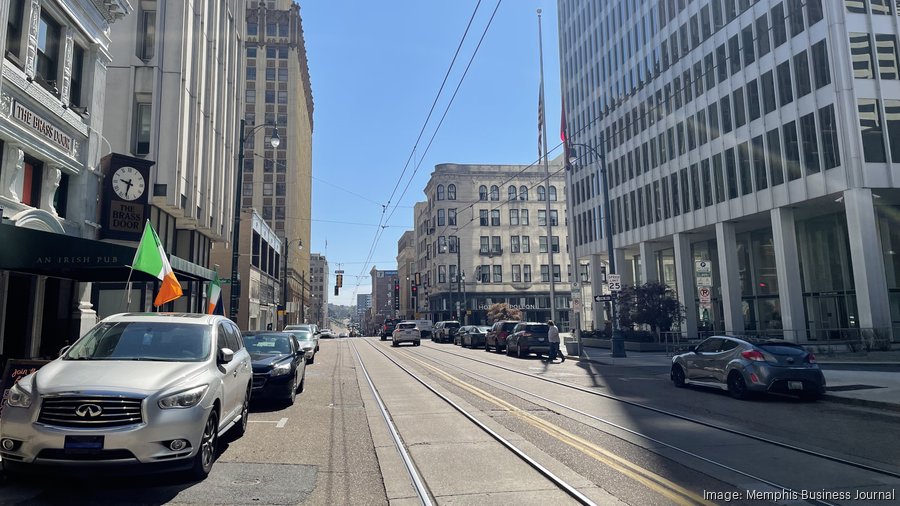
Madison Avenue buzzes with activity these days. Five local coffee shops line the space between The Commonwealth and Main Street, all usually full of workers and residents getting their morning fix. Bankers, lawyers, and advisors report to First Horizon’s headquarters, catty-corner from The Sterick. Young professionals live and work Downtown for AutoZone, FedEx Logistics, and St. Jude Children’s Research Hospital. Even Ford Motor Co. executives are part of the street’s humming daily routine.
Go down past The Commonwealth and one will find themselves in the Edge District. What once stood as an empty transition between the schools and hospitals of the Medical District and the housing and entertainment hub of Downtown now stands on its own as a rapidly growing destination and central part of the changing Memphis fabric.
Bars, restaurants, offices, and apartments are either opening or under construction all throughout the Edge, and plans for new projects in the area grow seemingly by the day. The Cycle Shop, Rise on the Ravine, Ugly Art are just a few of the many projects planned or underway in the district.
Take a leisurely walk west from the Sterick, and one will stumble upon any number of Downtown’s new developments. One can quickly end up at the site of the forthcoming Memphis Brooks Museum of Art, 100 N. Main Building, One Beale, and nearly every other project Downtown in just minutes.
Harris believes that in the current development climate, not having to purchase the huge amounts of steel and concrete a new skyscraper would require is a big advantage.
“In an inflationary environment like this, we're sitting on 30 stories of concrete, steel, and windows that we don't have to go buy,” Harris said.
That’s not to say that the restoration of Sterick won’t be a challenge. But, at long last, the opportunity to restore the tower outweighed the negatives.
From withering blight to shining bright
The Sterick has sat abandoned and decaying for decades, and those years have accumulated. Walking through it is like stepping into a place where the world ended 40 years ago.
The inside aesthetic is at times post-apocalyptic, but as if the world ended in the 1980s: Massive holes puncture some walls and ceilings, and old fixtures lie askew. But in many places, the shag carpet, paint jobs, and styles from a bygone era rest seemingly undisturbed in the eerily quiet building. For a tower so big and once full of activity, it is haunting walking through and being greeted by uncaring and overwhelming silence.
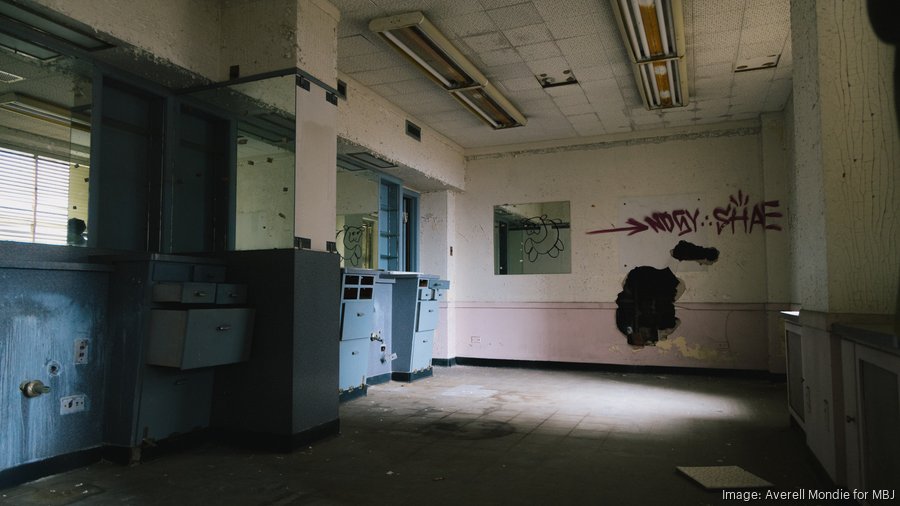
The walls are full of asbestos, a common plague in older buildings but one that must be dealt with in the hopes of gently restoring the tower. Modern heating and cooling will need to be brought into the building, another engineering challenge, as it was once cooled by a giant fan in the basement.
Yet Harris doesn’t fixate on these problems, but instead sees the limitless potential when he walks through. An abandoned bank branch on the ground floor, lit only by cellphone flashlights, doesn’t seem to stir melancholy in the developer. Instead, he points out the high ceilings and sight lines in the architectural bones of the space. He sees the pitch-black space as the bright, thriving, loud restaurant it may be in a few years’ time.
When he walks through abandoned offices, he doesn't get tripped up on the dated design schemes and rotted floorboards. He points out how some of the floorplans are already ideally shaped to become, say, apartments — and how every unit, even the interior ones, would have a beautiful view. Even the way the offices are aligned match modern apartment layouts, with studios and bedroom apartments.
The tower itself is not in as bad of shape as it seems it may be from the outside, according to Harris. The foundation, the steel, and the concrete are all in excellent condition, and the building stays dry even after large rains.
Every space in the Sterick comes with an idea, every challenge is an opportunity for innovation in the eyes of the tower’s doting new owner. He pats and observes the entryway granite floor, lovingly remarking on how well preserved the design and structure of it is, looking at it as if he had just uncovered the most valuable gem in the world.
Harris hopes to restore the building’s original Gothic revival interior and exterior, even joking at one point about bringing gargoyles to the tower’s exterior.
The building is on the National Register of Historic Places. With the National Park Service’s approvals, Harris plans to conduct a restoration maintaining its architectural integrity and honoring the era in which it was built.
For example, it may mean getting rid of some of the walls installed in later eras that clouded the original vision for the Sterick. He would also remove the 8-foot drop ceilings to get back to the original 10-foot-9-inch height. An urban legend has long held that the Sterick’s floor-to-floor dimensions were low, complicating a modern redevelopment. But, the slab of the next floor up can be spied a few feet above the moldering ceiling tiles.
The development team Harris has put together has worked on some of the highest-profile historical restorations in the city. Harris will conduct the restoration as part of his development firm, Constellation Properties. He has brought in his father, Michael Harris, who is the former EVP and COO of Highwoods Properties, to help him. The senior Harris has deep, extensive experience in development, including Bridgestone Americas’ $200 million headquarters in Nashville. The younger Harris recalls memories of going to the construction site for International Paper's HQ in East Memphis with his dad as a child, joking that he was able to have the Bob the Builder experience years before the show ever existed.
LRK, the architecture firm behind Crosstown Concourse and The Commonwealth, is set to bring their expertise to the project and have already prepared a 40-page viability plan. Grinder, Taber & Grinder, which also did extensive work on Crosstown, has served as Harris' pre-construction consultant. Chad Stewart & Associates add in structural engineering experience and are another Commonwealth project alum. Louisiana-based Bernhard is lined up to fill the key role of mechanical engineer. Their local achievements include work on the Kay Research & Care Center at St. Jude Children's Research Hospital. Their national work is headlined by AT&T Stadium, the home of the Dallas Cowboys.
Now, with the purchase complete, the team will shift into production, preparing a plan as Harris begins raising capital for construction and getting incentives in place.
What happens now?
For the Sterick to roar back to life, it first needs some medicine. Securing private capital and public incentives, and finalizing a plan for how the Sterick will be used are at the very top of the list.
The plan for the Sterick's redevelopment right now is very general, but Harris sees the ground floor having an active and varied restaurant and retail scene. There would be an aspect of residential moving up the tower, but how much is still in the air as his team looks at hotel, office, and other uses.
The Avis car lot also acquired from the Grosvenor trust may end up being a crucial way to meet parking requirements. Harris is considering building a garage on the site, and he speaks highly of the owner of the Avis operation. He said that even if he does end up building a garage, he wants Avis to continue to be a tenant on any potential space that would be a part of the development.
The Sterick sits in an Opportunity Zone and a Tourism Development Zone, and on the National Register of Historic Places. All of those could bring a bevy of opportunities for economic incentives.
Harris and his group plan to go before the various Downtown Memphis Commission (DMC) affiliate boards to try to take advantage of different programs available for developments. DMC president and CEO Paul Young told MBJ that the DMC is excited to see the project get underway. Harris said Young was a key voice in getting the parties together to make the deal. The DMC has long sought to bring a deal to Sterick; former DMC president and CEO Paul Morris originally led the charge in 2013 by putting the tower at the top of its "Dirty Dozen" blighted properties it hoped to see redeveloped.
Four buildings on that list were on the same stretch of Madison as Sterick. The neo-Gothic tower would be the last on the street to come back. Across the street from the Sterick, the old Toof building became the Pressbox apartments. The Commonwealth was another one. The final one, 111 Madison, is set to open as a restaurant later this year.
“This is a win that signifies the heart of our city,” Young said. “It shows how diligent we are to make sure that we are preserving historic treasures in our community. It's not always the easiest approach to go in and identify ways to redevelop buildings that have been standing for 50 to 100 years, but our community is committed to it because it preserves the character. It preserves the culture."
Young confirmed with MBJ that if residential is a component of the project and the project begins to seek incentives after July 1, it will be subject to new rules that require 20% of units in developments of Sterick's size to go toward affordable housing in order to qualify for incentives.
Harris hopes to begin sharing specifics and getting incentives lined up before the year is through, and then move immediately into capital raising for construction. He is actively looking for investors to help him bring his vision to life.
For now, he doesn’t want to box in where the tower can go in its new future. In general, the owner's vision is one of mixed-use. He wants to one day see the Sterick the center of a thriving district, a place where all the developments feed off each other.
He is a big believer in the human ecology model, a sociological concept that focuses on how an individual can impact the environment or neighborhood around them and how the environment can affect the individual. He wants to see the area around the Sterick transform into a place people can grow.
He wants to see density on the bottom floors and becoming more luxurious as you ascend the tower. He envisions teachers at the nearby Downtown Elementary School being able to afford to live in the building. And he is toying with building out office space for small- and minority-owned businesses, rather than pre-leasing the space and building to suit.
Overall, Harris’ aspiration is to create a development that causes the growing neighborhood around it to rise.
“We want it to radiate,” Harris said. “We love it for all the reasons that most people wouldn't. That's an irreplaceable physical structure, and there's nothing like it in town. There's nothing as opulent as that."
– With additional reporting by Greg Akers
